The Samsung Galaxy Note 10+ 5G is the South Korean manufacturer’s latest flagship device and as such features top-end components all around, including a 6.8-inch AMOLED display with 1440 x 3040 resolution, a Exynos 9825 chipset, and 12Gb of RAM. On the back of the device you’ll find a quad-camera setup with ultra-wide and tele cameras as well as a time-of-flight sensor.
Selfie shooters will be mostly interested in the front camera specifications, of course. Here the Note 10+ 5G offers a single-camera setup with a 1/3-inch 10Mp sensor coupled to a 25mm-equivalent lens with an f/2.2 aperture. A dual-pixel AF system ensures that images are in focus and in video mode, users can record selfie-clips at 4K resolution at 30 frames per second.
We’ve put the Samsung Galaxy Note 10+ 5G front camera through its paces. Read our full review to find out how it performed under our DxOMark Selfie test protocol.
Key front camera specifications:
- Single front camera
- 1/3-inch 10Mp sensor with 1.22µm pixels
- 25mm-equivalent focal length, f/22-aperture lens
- Dual-pixel AF
- 2160p at 30 frames per second (4K)
About DxOMark Selfie tests: For scoring and analysis in our smartphone front camera reviews, DxOMark engineers capture and evaluate over 1500 test images and more than 2 hours of video both in controlled lab environments and in natural indoor and outdoor scenes, using the camera’s default settings. This article is designed to highlight the most important results of our testing. For more information about the DxOMark Selfie test protocol, click here.
Test summary


With an overall Selfie score of 99 points, the Samsung Galaxy Note 10+ 5G is the new Number One in our DxOMark Selfie ranking for smartphone front cameras. Achieving an outstanding 103 points, it also takes the lead for the overall Photo sub-score, thanks to excellent performance across pretty much all test categories.
Images captured with the Samsung’s front camera generally show good exposure on faces down to very low light levels, along with a wide dynamic range that ensures good highlight and shadow details in difficult high-contrast scenes. Color in general, and specifically skin tones, are usually rendered pleasantly; only in low light did we observe some undersaturation of faces. The auto white balance system also delivers good results in bright light and under indoor conditions.
In terms of detail, the Note 10+ 5G adopts the same approach as previous Samsung flagship devices, putting a lot of emphasis on noise reduction. This means noise is very well controlled in outdoor and indoor shots and starts creeping in only when shooting in fairly dim conditions. It renders fine detail and textures nicely, but not quite on the same level as the very best in class.
The Samsung device is also the best so far for front camera flash photography, with consistently good results when shooting both in complete darkness and in low ambient light. The autofocus system ensures good focus on the subject from very close to selfie-stick shooting distances, and a relatively wide depth of field means that backgrounds still show good detail and people towards the back in a group selfie are still rendered acceptably sharp.
The camera’s artificial bokeh mode creates images with good subject isolation and an overall pleasant blur effect, but the single-cam setup isn’t capable of creating a blur gradient, so blurs objects that are in the same focus plane as the subject. This means that the results aren’t quite as realistic as those from the best dual front cameras. This said, the Galaxy Note 10+ 5G front camera’s photo mode hasn’t got any real weaknesses and delivers good image results in almost any selfie situation.
The same is true for Video mode, which scores 93 points in our tests, making it the joint number one for video along with the Asus ZenFone 6. In many respects the Note’s video performance is very similar to that of the S10 5G, but the new model now records at 4K resolution by default, dramatically improving texture rendering and detail.
Despite the high-resolution clips, noise is well under control in most situations and the stabilization system is just as efficient as on the S10 5G. The autofocus is also fast and accurate, and the exposure system delivers good results in almost any condition.
Areas to improve include occasional exposure instabilities and stepping as well as white balance casts that can be visible, especially in low light. Those minor shortcomings aside, the Note 10+ 5G’s video performance is excellent overall.
Photo scores explained
With 103 points, the Samsung Galaxy Note 10+ 5G achieves the highest Photo score in our testing to date. We calculate the Photo score from results and analyses of tests that examine different aspects of a device’s still-image performance under different lighting conditions. In this section, we’ll take a closer look at these image quality sub-scores, analyzing some aspects of the Samsung Galaxy Note 10 5G versus its key competition.

Exposure and Contrast
Samsung Galaxy Note 10+ 5G (Exynos)
84
91
The Galaxy Note 10+ 5G performs very well in the Exposure and Contrast category. Both subject exposure and detail on the background are very good in bright light. Dynamic range is not quite as good as on the Asus ZenFone 6, with some more highlight clipping in high-contrast scenes, but it’s a slight improvement over the Galaxy S10 5G and very decent overall for a front camera.
Target exposure remains good in indoor conditions, but our testers occasionally observed some underexposure on faces in challenging backlit scenes. The camera is capable of producing good exposures even in very low light conditions, but contrast on faces is reduced in very dim scenes.

Color
Samsung Galaxy Note 10+ 5G (Exynos)
89
105
The Note 10 achieves a very good score for Color, thanks to generally very good color rendering that is in most scenarios very close to that of the S10 5G. White balance tends to be slightly warm in outdoor conditions, which makes for pleasant skin tones and overall color rendering. Color results are more neutral in indoor conditions and be can slightly cool under warm artificial light sources, such as tungsten light.
In challenging low light scenes, the Note 10+ 5G sometimes rendered skin tones slightly unnaturally, but on the plus side, color shading is not really an issue and is only sometimes slightly noticeable in images captured in very low light. Under indoor conditions, the Note 10+ 5G sometimes produces a slightly warmer overall color response than both the ZenFone 6 and the Huawei P30 Pro, such as in the sample below.

Focus
Samsung Galaxy Note 10+ 5G (Exynos)
86
97
Like other recent Samsung high-end phones, the Note 10+ 5G comes with an autofocus system in its front camera. The system is well-tuned and provides good focus on faces at all typical selfie subject distances from 30 to 120cm. As you can see in the samples below, depth of field is pretty wide, allowing for good detail in the background. On both the Asus ZenFone 6 and Huawei P30 Pro, the background is visibly more blurry, making the Samsung front cam the best choice out of this trio for travel-selfies with landmarks in the background. It also means that in group selfies, the Note 10+ 5G renders even subjects at the back of the group acceptably sharp.
In the sample shots below, you can see that focus on the face is good, even at a typical selfie-stick shooting distance of 120cm. The same is true for the Asus Zenfone 6, but the Huawei P30 Pro, which comes with a fixed-focus lens, cannot adapt to the longer-than-usual shooting distance and captures a subject that is noticeably out of focus.
The wide depth of field also helps with group selfies when not all subjects are in the same focus plane. In the comparison below, the face of the person furthest from the camera is noticeably sharper on the Note 10+ than on the competitors.

Texture
Samsung Galaxy Note 10+ 5G (Exynos)
63
85

Noise
Samsung Galaxy Note 10+ 5G (Exynos)
77
90
The Note 10+ 5G’s front camera adopts a very similar approach toward detail rendering and noise reduction as other recent Samsung devices: noise is generally very well under control at the expense of some fine detail. In the graph above, you can see that in bright light and indoors, the Samsung’s detail rendering is on a similar level as that of the S10 5G and the Huawei P30 Pro, but it cannot quite match the ZenFone 6, which is the top-ranked device in this test category. In low light, the Note 10+ drops off slightly more than the others, but still, the Samsung’s overall detail/noise balance is very good.
What we can see in the graphs is confirmed in our lab samples. Texture rendition is good, especially on the face in bright outdoor light and under indoor lighting. Levels of detail are good in the background as well, and noise is very well under control.
Image quality does start to suffer in low light, however. Fine detail on the face is pretty much gone and both comparison devices deliver better textures in low light. Luminance noise starts to become visible on the face and in other areas of uniform color but is still fairly well-controlled, as you can see in the graph below. However, there is also some chroma noise creeping in.
In the graph below, we can see that noise is pretty well-controlled down to low light and only increases significantly when shooting in near-darkness. However, that comes at the expense of fine detail rendering, which is noticeably better on the Asus and the Huawei.

Artifacts
Samsung Galaxy Note 10+ 5G (Exynos)
85
92
Overall, the Note 10+ 5G image controls artifacts well and the device earns itself a good Artifacts score of 85 points. The most noticeable artifact is color quantization—a reduction of the number of distinct colors—as can be seen on some skin areas in the samples below. We also deducted some points for ringing that can be visible on high-contrast edges and for unnaturally smooth skin rendering in low light.

Flash
Samsung Galaxy Note 10+ 5G (Exynos)
91
93
The Note 10+ 5G achieves the best sub-score for flash performance of any front cameras we have tested to date, thanks to accurate exposure, decent texture rendering, and well-controlled noise. When shooting in complete darkness, skin tones have a very slight orange cast but are neutral when flash is mixed with low tungsten light.
Vignetting is visible but fairly well-controlled, and some color shading is noticeable in both test conditions. Overall, however, the Samsung delivers excellent results when shooting with its display flash.



Bokeh
Samsung Galaxy Note 10+ 5G (Exynos)
65
75
The Galaxy Note 10+ 5G comes with a single front camera that is capable of generating a pleasant bokeh effect, but in comparison to multi-cam variants, has some limitations in terms depth estimation and blur gradient.
Subject isolation is pretty good, with only fairly minor inaccuracies around the subject, but there is no blur gradient, with only one degree of blur applied to all out-of-focus elements in the scene. The mode also blurs objects in the same focus plane as the subject. You can see this in the sample below, where the plant next to the subject is blurred despite being the same distance from the camera as the face. The same thing happens on the Huawei P30 Pro, but the ZenFone 6 with its dual-camera is capable of detecting that the plant and the subject are in the same focus plane and does not apply any blur to either.
Despite the lack of a blur gradient, the effect is pretty nice and fairly natural overall. In the samples below, you can find some slight depth estimation artifacts in tricky areas, such as the subject’s hair or the jacket in the image on the left. On the plus side, objects connected to the face, such as the hand in the image on the right, are detected as part of the foreground and not blurred. Spotlights in the background show nice contrast as well.
Video scores explained
The Samsung Galaxy Note 10 5G front camera achieves a Video score of 94 points—the highest score for a front camera to date—thanks to excellent results across all test areas and especially for texture. Its Video sub-scores are as follows: Exposure (69), Color (81), Focus (85), Texture (88), Noise (77), Artifacts (84), and Stabilization (77).
Overall, the Note 10+ 5G’s video results are very close to its stablemate S10 5G, but it improves significantly on texture (15 points), as the new model now records at 4K resolution by default. This means that the Note 10+ 5G is among the best devices for video texture, though it is still not quite on the same level as the ZenFone 6 with its rotating camera and larger sensor (making it the clear leader in this category). Overall, detail is excellent in bright light and under typical indoor conditions. Some fine texture is lost in low light, but the Note 10+ 5G still records better detail than most competitors in dim conditions.
The video stills below are from clips captured at 100 lux. Thanks to its 4K default video resolution, the Note 10+ 5G is capable of recording noticeably better fine detail than the two comparison devices. Some luminance noise is visible in areas of the background, but overall noise is very well under control in these conditions.
The crops below show the same image area in each video still (unlike the 100% crops we otherwise use throughout this review) to illustrate the resolution advantage you get from the Note 10+ 4K video mode.
Despite the higher resolution, noise is still well-controlled in most conditions; only in low light does some luminance and chroma noise creep in. Samsung has also done a very good job in terms of video stabilization, which is still very efficient in both indoor and outdoor conditions, despite the higher 4K pixel-count the algorithms now have to deal with. It efficiently corrects for both walking motion and camera shake when holding the device still, making for smooth and stable video output in most situations.
Exposure on faces is accurate in most conditions and the camera is capable of achieving good exposure down to pretty low light levels, but we have seen some slight instabilities and stepping on occasion. There can also some highlight clipping be visible when recording high-contrast scenes, but overall, its dynamic range is similar to that of the S10 5G, despite the larger amounts of data the image processing has to manage.
Skin tones look mostly nice in the Samsung’s video clips, but can be rendered slightly unnaturally on some occasions. We also noticed the occasional white balance cast, especially in low light; but overall, if video performance is high up on your list of priorities, you can’t go wrong with the Samsung Galaxy Note 10+ 5G.
Conclusion: The new reference for selfie shooters
The Samsung Galaxy Note+ 5G front camera delivers excellent still image and video quality across all shooting and light conditions and deservedly earns itself the new number one spot in our DxOMark Selfie ranking. In Photo mode, exposure and color rendering are very good in most situations, and a wide focus range ensures that subjects are in focus at any shooting distance. Bokeh mode has some limitations but is still capable of producing pleasant and fairly natural-looking results. When recording videos, the Note 10+ 5G benefits from its 4K default resolution, delivering excellent detail under most light conditions. Autofocus and stabilization systems work very accurately and efficiently as well, and overall the Samsung Galaxy Note 10+ 5G is easily recommended to any selfie photo or video shooter.
Photo pros
- Accurate target exposure and wide dynamic range
- Good white balance in bright light and under indoor conditions
- Wide focus range
- Pleasant bokeh effect with good detail
- Good exposure on faces when shooting with flash
Video pros
- Very good detail in bright light and under indoor conditions
- Noise well under control in most light conditions
- Accurate, fast and stable autofocus and wide depth of field
- Accurate exposure of faces in most conditions
- Efficient video stabilization
Photo cons
- Loss of fine detail in low light
- Desaturated skin tones in low light
- Some out-of-focus images
Video cons
- Occasional white balance casts, especially in low light
- Some exposure instabilities and stepping
- Luminance and chroma noise in low light


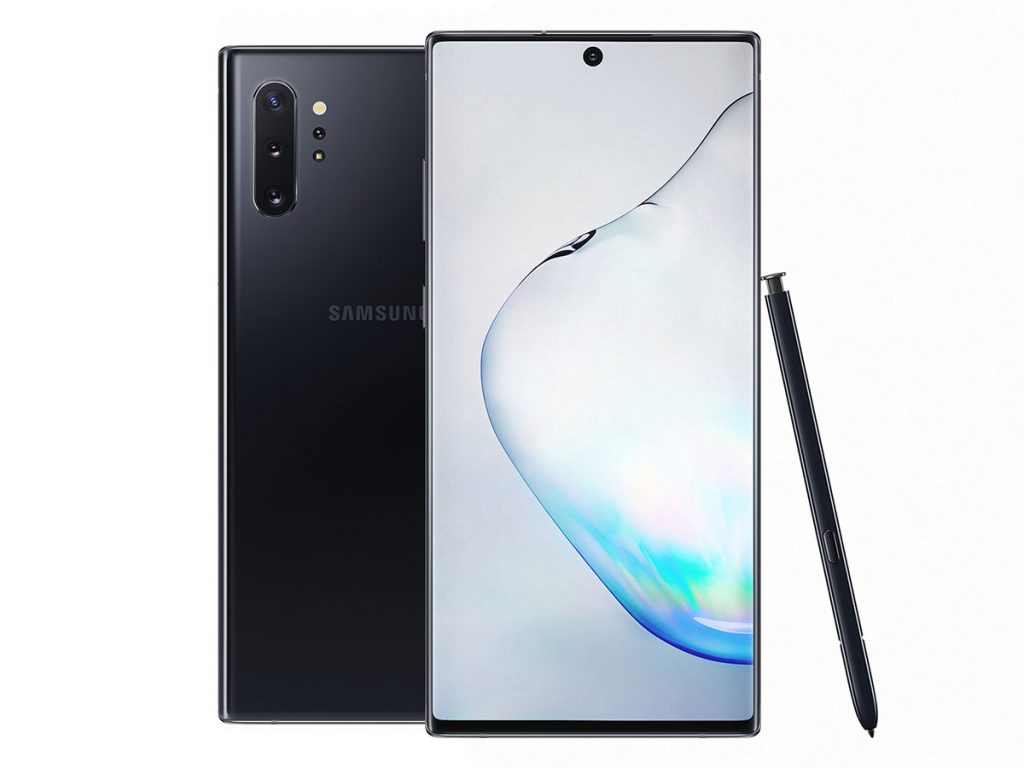
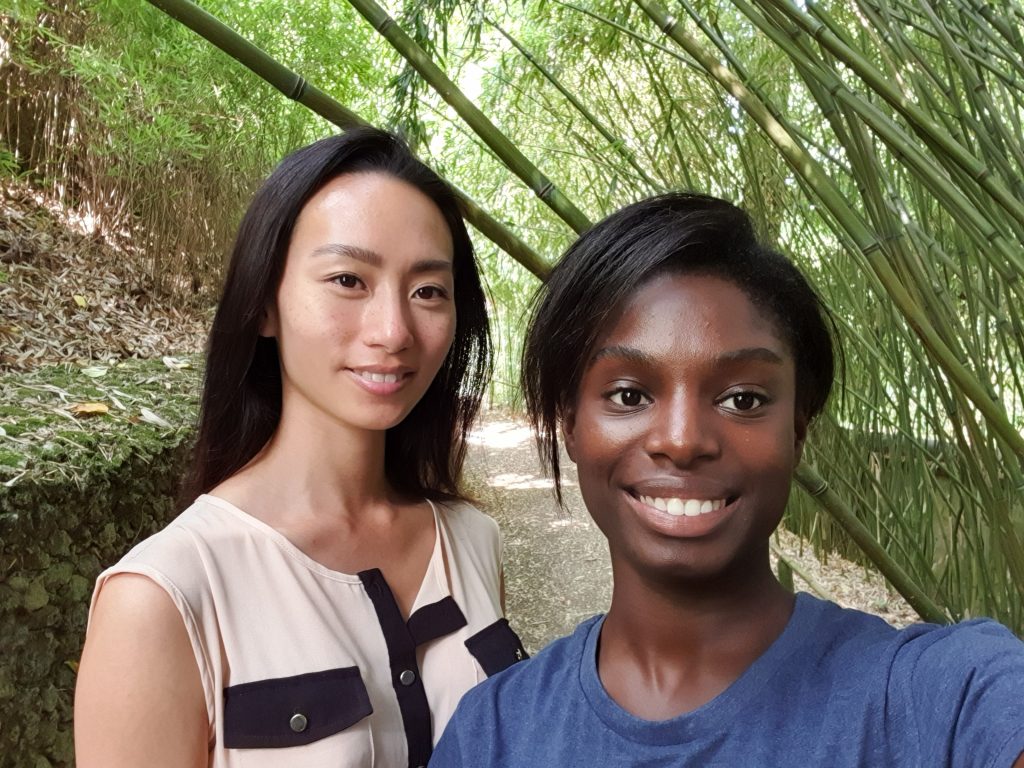













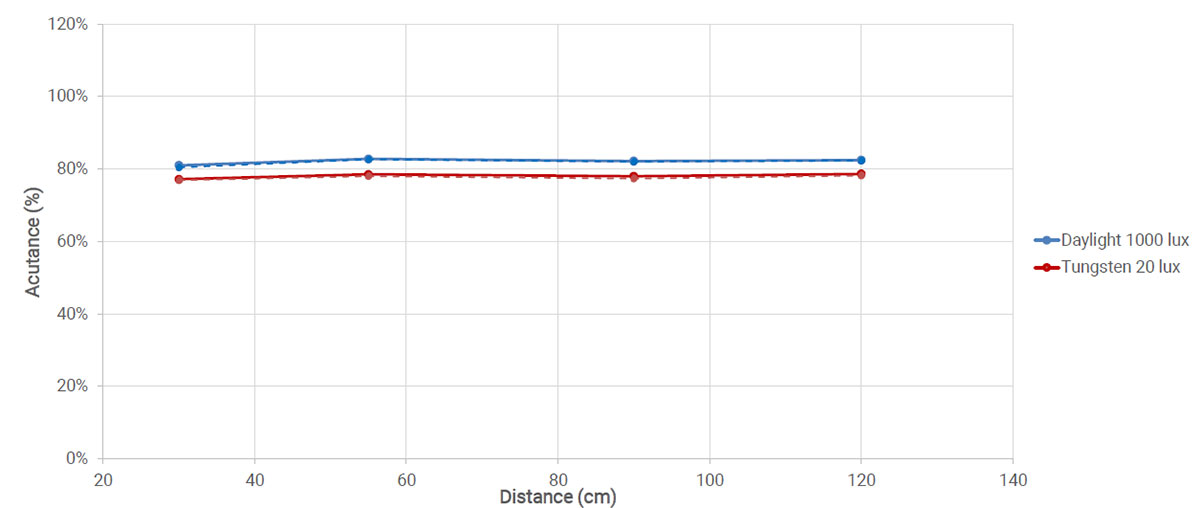



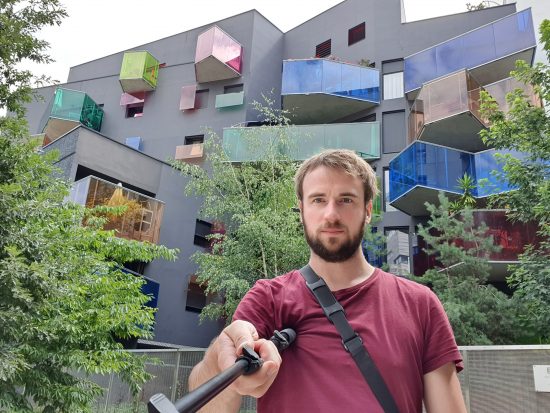
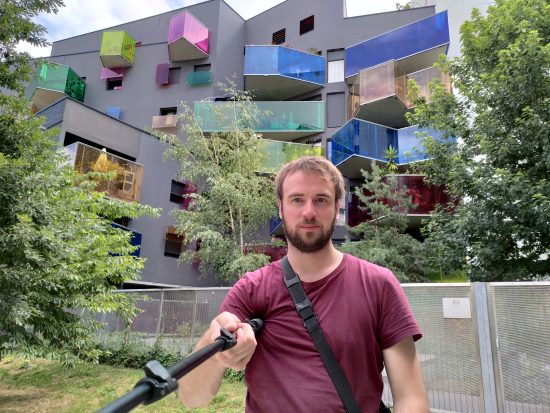
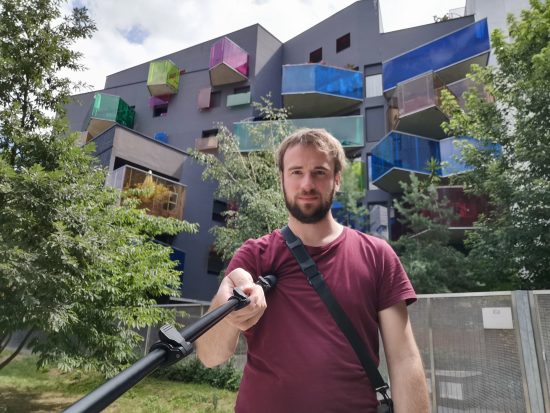
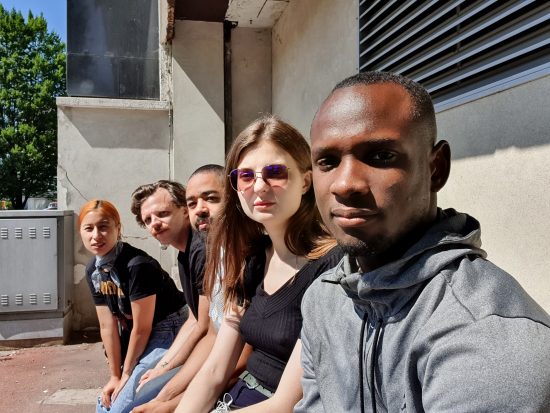
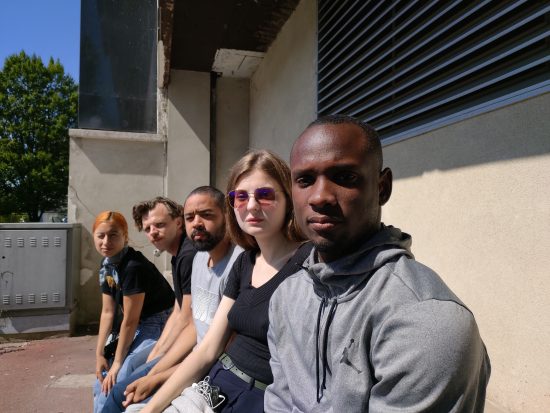
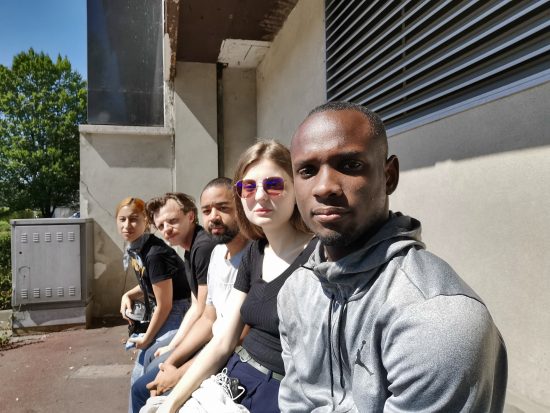
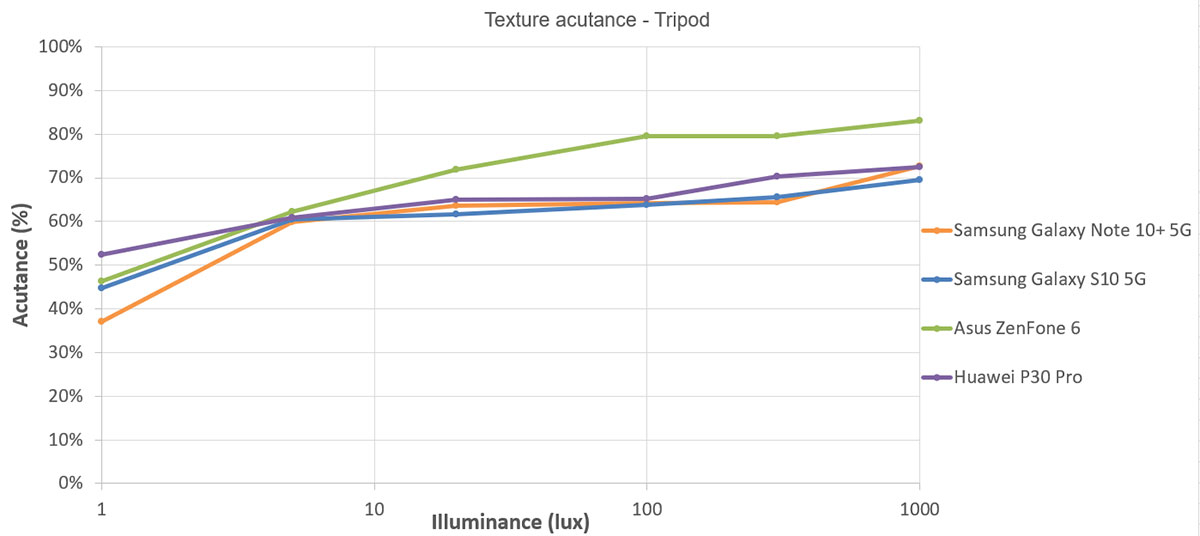





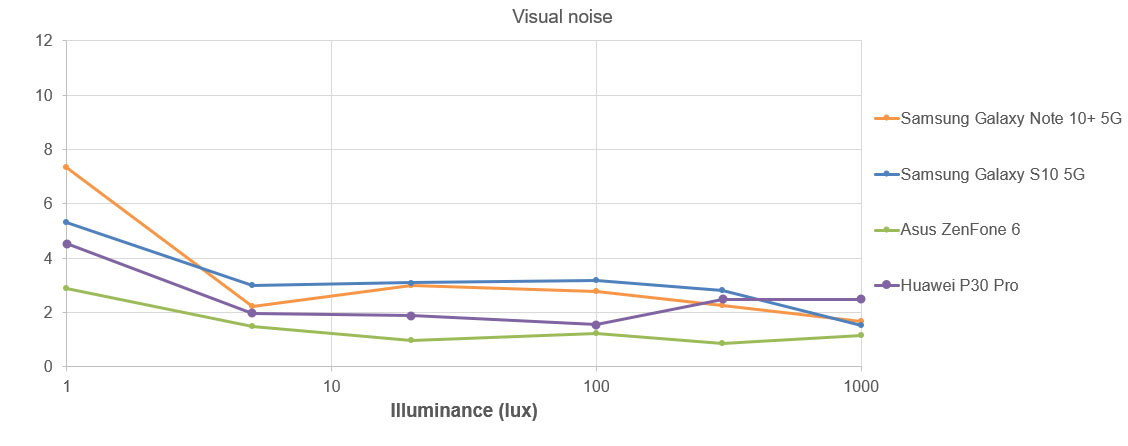



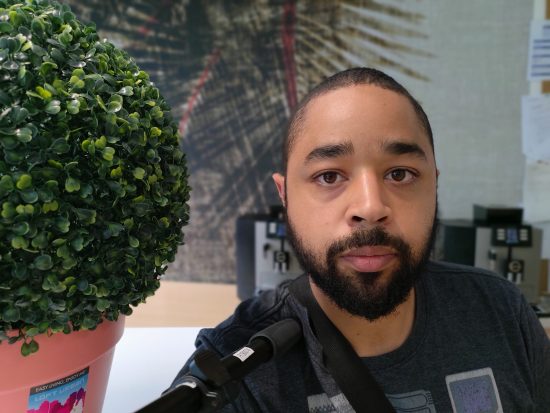
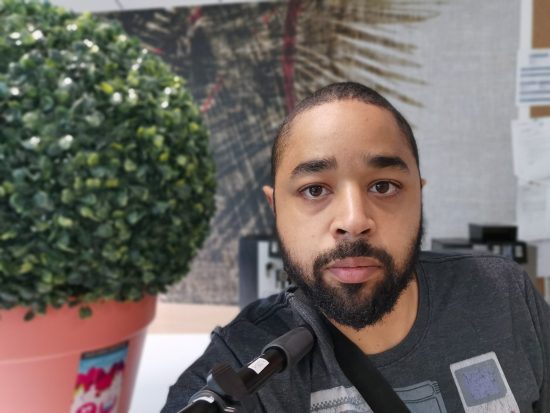


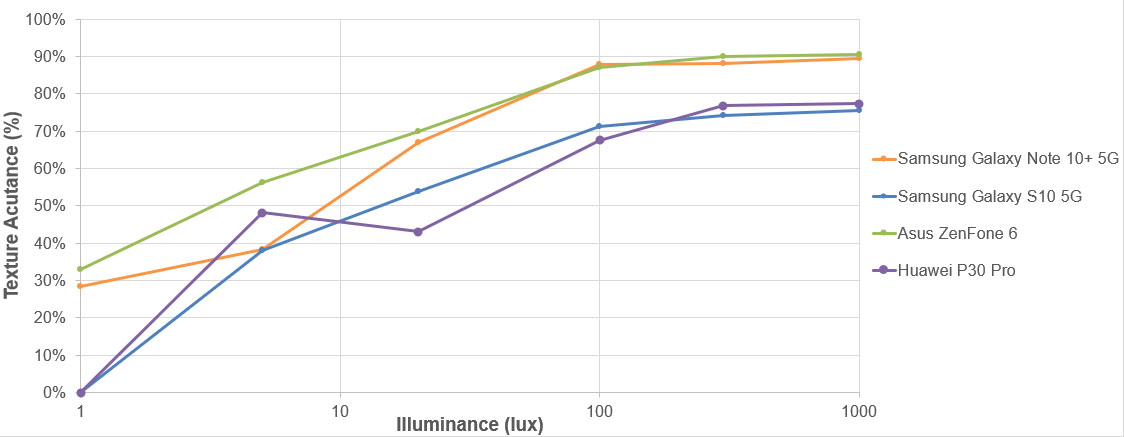



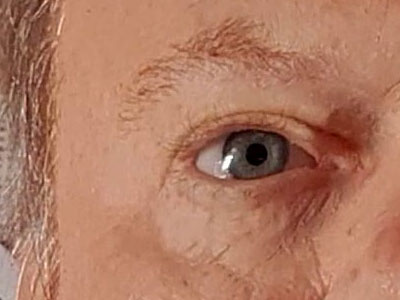
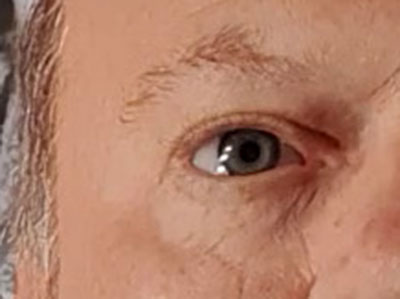
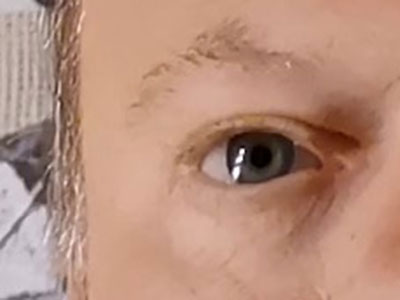
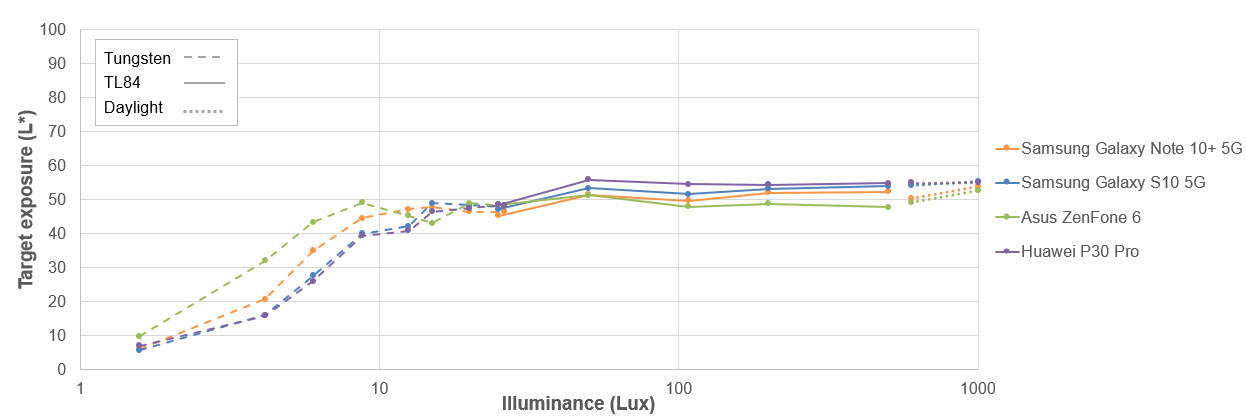
DXOMARK encourages its readers to share comments on the articles. To read or post comments, Disqus cookies are required. Change your Cookies Preferences and read more about our Comment Policy.